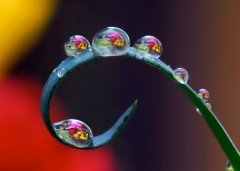
Experimenting with new ideas opens up ways for getting creative at what you do. Similarly breaking the bounds and photographing new themes, subjects or say visiting new locations marks the beginning of photographic explorations and excursions. You can get started at home — pick up your favorite book from the book shelf and feature it as the bestseller or give your creativity a kick-start with photographing the vital element for all known forms of life — H2O (Water).
The water droplets can be an awesome subject to shoot. It’s varied shapes, colors and dynamic appeal will definetely pay off all your hard work. A word of caution here, “Be careful, you can get addicted!” Quite right, once you get started with capturing the water droplets, you will be surprised with your own results and will try to capture more of it — amazing shapes, amazing effects and amazing droplets. And now it’s time to check out some cool ways for experimenting with the amazing subject — the water droplets.
-
Splash Set-Up At Home
Not sure whether photographing the water droplets will work for you. Raise the flags and give a go ahead with setting up the splash set up at home itself. Set up the camera on tripod and tune the camera settings — fast shutter speed and burst mode is preferable. Place a glass of water on a table against white background. Now ask your friend or family members to drop the ice in the glass while you stand by the camera to release the shutter and capture the scene — the splash scene. The spontaneity of splashing water will fill your frames with exciting shapes and interesting compositions. Check out more on photographing splash scene here.
-
Have Fun Experimenting With Colored Liquids
It gets more and more fun as you involve yourself in photograping the splash scenes. Now that you have already tried experimenting with plain water, it’s time to get creative. Add some color to water or perhaps try capturing the splash droplets of colored liquids like Corrie White. Check out her flickr set Fun With Water here for capturing the water droplets like a pro — complete control over the drops, superb colors and remarkable timing. This effect can be replicated by using the dropper for dropping the water droplets or simply by investing in a drip kit which allows you to control the size, interval between drops and the flash lag.
-
Capture The Dew Drops
Nature has its own ways of revealing the beauty and morning dew drops adds to its essence. The morning dew drops shining on leaves, flowers and tall grasses just look stunning. Get up early and put on your macro lens to explore and capture bigger than real life dew drops on the complimentary surfaces like leaves or spider’s webs. The soft and angular sun light does its best to make the droplets appear as the pearls.
-
Experiment With Refractions
TIme and again, I love to mention a flickr set called A Thousand Drops Of Light. This flickr set consists of some of the finest examples of refraction. Then there is nature photographer Steve Wall’s Flickr set Waterdrops. You will find some inspiring shots and an excellent write-up for replicating those wonderful water drops. Be it Ecstaticist, Steve Wall or Giovanni Orlando (flickr fame jjjohn), have used water as the natural lens to get striking optical effects. Check out what Steve has to say about this — the optical & physical properties of water to act as a lens.
Simple physics produces these tiny, beautiful and common images. Water is cohesive, it naturally bonds together in the shape of a sphere, and in that shape it functions as a miniature lens that will refract nearby objects. Using that organic lens as seen through your technological lens, will allow you to explore those tiny, complex worlds.
And then you ofcourse need to pay attention to background, composition and focus — the focus on the water drop as well as the focus on the subject refracted within the drop. The focus stacking technique comes is handy for capturing the refractions with accuracy.
-
Water Droplet On Glass
Rain drops on the window glass is also a good idea. The water droplets on the outer surface of the glass dominate the composition with irregular shapes. The conglomeration of beautiful droplets create unusual patterns. You can also get some amazing shots by employing light effects. The reflected light and the water droplets together replicate the bokeh effect as in the image below.
-
Delve Into Photographing The Array Of Droplets
Look at the photograph below. Looks like the photographer has tried to paint the sky with water droplets. You can also try something like this where a numerous water droplets of varying sizes capture the viewers attention.
-
Capture All That Action & Drama
While photographing the long exposure shots along the coastlines give surreal effect to streaming water, you can also anticipate to capture the crashing waves and gushing waters as well by tuning the camera at fast shutter speed. Capture all that action and drama — ripples, crowns, blur, spills and more.
Do you also love to photograph the water drops? Let’s make this list to 10. Add your creative ideas and prolific tips or simply drop by to share your experience with photographing water droplets.

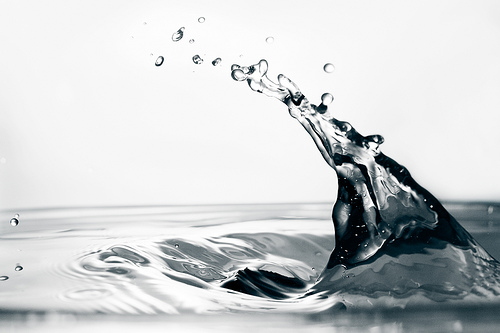
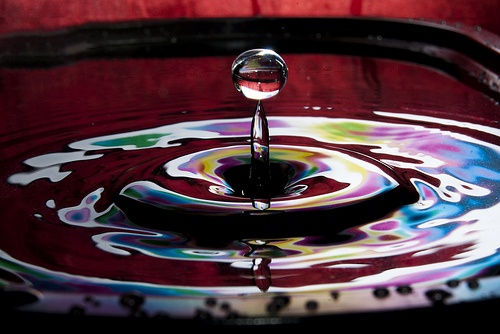
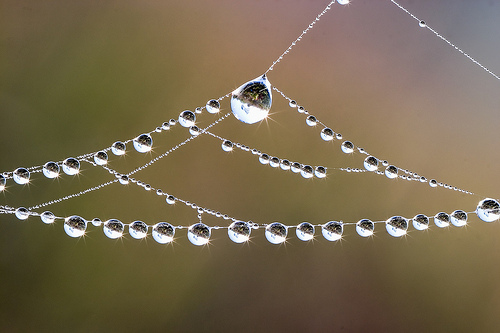
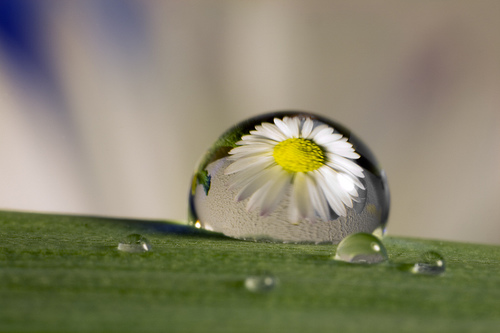
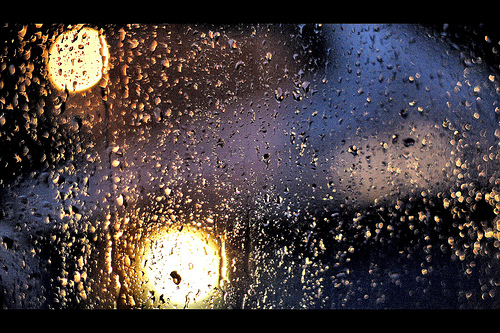
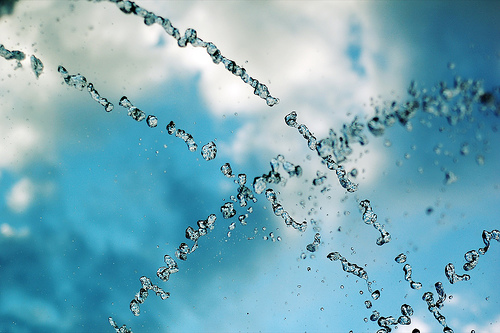
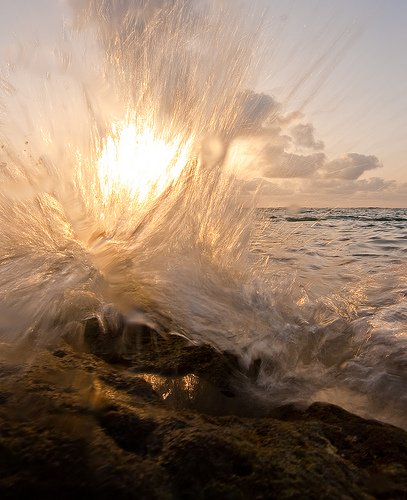

absolutely fantastic. thanks for these awesome tips.
Thanks, I will try with a macro lens.
I hope I will do that.